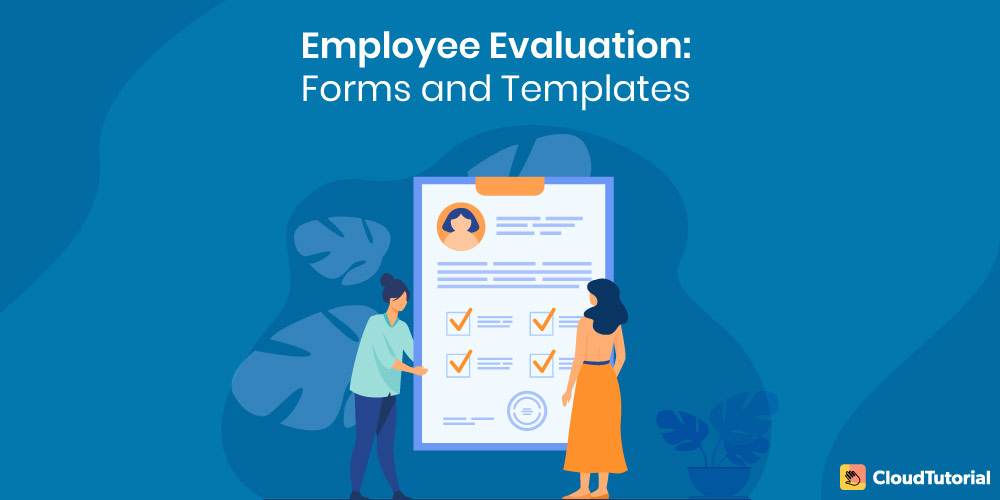Employee evaluation is an integral part of every organization. Be it a small startup or a multinational with offices in more than one country, this is how they analyze and assess each employee’s performance,
Fact: 72% of employees feel their performance would improve with corrective feedback. (source)
It is very important to keep these performance reviews according to the required standards as these forms can help you see what is the overall performance of your team, which employees deserve performance appraisals, or which ones need to go.Here are some of the most important things you can add to an employee evaluation form.
Table of Content
Employee Evaluation Form: Things to Include
A good employee evaluation form should have all the required information, be precise enough, and have proper headings and segregation for readers’ ease. You should keep in mind both employees and the management as they will have to either fill in the form or read and analyze it.
Our recommended employee evaluation form pattern goes something like this:
Basic information
This basic information should be at the top, so there is no confusion about who this employee evaluation form belongs to. The information should have:
- Employee name
- Employee department
- Employee designation
- Official ID
- Reviewers/ managers Name
Review time period
This is to notify the employee and the reviewer about the review period. This information is important and deserves a separate section as organizations have their own performance review timeline. Some companies prefer to evaluate employees every quarter, or some do it once a year. This section helps keep tabs on what specific time period this review form is for.
A starting and ending date of the review is enough for an employee evaluation form.
Rating criteria
Performance reviews and employee evaluation forms are only useful when both the employee and the reviewer know exactly what matrices you want to evaluate. Clear evaluation criteria should be mentioned to make it more productive. To give you an example, a commonly used scale fits 1-5 scoring points for each criterion, 1 being poor and 5 as the highest level of satisfaction.
Scale Details 5 Excellent performance. Extraordinary in every way. Keep performing. 4 Above-average performance. You are able to exceed the expectations. 3 Average performance. Able to meet expectations. 2 Unsatisfactory performance. You failed to meet the expectation. 1 The performance was poor. A lot of work is needed to improve. This gives a clear idea to what an employee’s performance is, where they stand, and what their goals should be.
Evaluation Criteria:
Now that we know the employee and rating criteria, the next section should be the evaluation criteria and the score in our employee evaluation form.
Every department has its own criteria to evaluate performance. Add each point in tabular form and give it a rating.
For example, Sales teams evaluation forms can have the following criteria:
Criteria Evaluation Has the sales target been achieved for the mentioned time frame? 3 Has great communication skills 2 Is very good at teamwork 4 Have been punctual and regular in attendance 2 The overall quality of the performance 3 You can divide the evaluation criteria into categories and score each category separately and together as well, based upon your employee evaluation form design.
Peer Review
Some companies also add a peer review section in their employee performance management process, where employee performance is rated by their team members. This is mostly anonymous and only has a rating scale average. This is to avoid any bone of contention between team employees after the employee performance evaluation form is submitted.
Self-evaluation
Employee evaluation should also have a self-evaluation form section, where employees review themselves. This helps them analyze and see if they lack in an area they need to improve.
Comments
There should be a comments section at the end of the employee performance evaluation form, where the reviewer adds comments. Project managers can also add comments if needed.
Build an advanced knowledge base for your customers and give them answers fast – real fast.
Take your app and help center to the next level with CloudTutorial.
2 Main Formats of Employee Evaluation Forms
The employee evaluation form can be scorecard based or question-based.
Scorecard Based employee review form has a list of all required matrics. Each evaluation point is listed with a score section in front of it. The reviewer simply scores according to the description. This score can, later on, be used as an average as well. The example mentioned above is a scorecard based.
Question-Based performance reviews have questions with no specific answers but help open up a conversation between the reviewer and employee. Questions like:
“what is your achievement this quarter?”
“share new initiatives you have taken in the past quarter.”
Or
“Have you learned something new? If yes, what is it and how will it beneficial to your growth”
Make a pretty good question-based employee review form.
Pro Tip: We recommend a mixture of both scorecard and question-based employee performance review form. The balance of both helps take decisive actions and make the review form actionable.
Employee Evaluation Templates
We have compiled a list of 8 employee performance review templates that you can download, modify, and use in your own employee performance evaluation form.
Basic performance review template:
This is a very basic and general performance review template that can fit into any company/role.
Teamwork heavy/Customer interaction employee performance evaluation:
This employee performance review template works when you have to evaluate employees that require customer interaction or a lot of communication/teamwork.
Manager evaluation form template
Managerial posts have their own requirements and KPIs to be judged and evaluated. You can use the below-mentioned evaluation form template. Modify as needed.
Self-assessment evaluation template
Self-assessing employee review templates will be a little different from other types of the evaluation process. The goal is to get employees to think about their achievements, goals, and contributions.
Probation Period employee review template
The probation period is an essential part of every employee’s evaluation. Usually, the first 90 day period is used to judge and see if the new employee is the right fit for the company or if he /she fits in the designated role or not.
Peer review template
A simple, to-the-point peer review template can help identify employee strengths and feedback from colleagues. This helps determine how to improve performance and communication gaps.
Group Evaluation Template
If you want to evaluate a team, a group, or a department, you can use this evaluation form. This helps in professional development and increases the performance of the whole team.
30-60-90 employee evaluation form
This type of employee evaluation form is submitted after a new hire has spent thirty days, sixty days and then ninety days in your firm. Submitted every month for the first 3 months, this performance review helps analyse if the employee is a good fit in the company. This employee evaluation form takes feedback from team mates, managers and HR and all stakeholders to share their valuable opinion.
Build an advanced knowledge base for your customers and give them answers fast – real fast.
Take your app and help center to the next level with CloudTutorial.
Best Practices to Follow While Filling Employee Evaluation Forms

While performance evaluations are subjective to every firm’s own goals and procedures, you can still follow some good practices to make sure this annual performance evaluation is a useful exercise.
Create Clear KPIs
The primary purpose of employee review is to make sure everyone performs at their best, and the best performers are rewarded properly. For this, the most important part would be clear key performance indexes (KPIs).
All performance indexes should be clear enough and adequately communicated to all employees to make sure everyone knows the criteria that will be used for employee reviews.
Use Average Scores
Sometimes employee performance evaluation forms become hard to deduct any result out of it because of a mixture of high and low scores. This is why you can use average scores to see what employee performance is and where it stands.
Pro Tip: You can create an average score for each section. For example, divide evaluation points into categories like Professional Capabilities, Team Work, Management Capabilities, Self-evaluation e.t.c then take the average score of each section to see the overall evaluations. This will help in performance appraisal.
Do Ask Personal development:
Perhaps the most overlooked section in job performance is personal development. Employees always want personal growth, and what could be better if their company also values it for employee performance reviews.
Do include a section where you ask your employees questions like “what have you done in the previous quarter for your personal development” and “how will it help improve the company.”
Try to keep it simple:
Although employee evaluation forms could be detailed and have lots and lots of matrices to measure strengths and weaknesses, we recommend to keep it simple. Simplicity is always underrated.
Keeping it simple helps employees understand what exactly your firm demands from them
and asking open-ended questions to help employees communicate their achievements and point of view.
FAQs
- There is a consistent system and evaluation process
- Personal opinions and interpretations have less effect when there is a specific set of evaluation criteria
- You have records in case a legal conflict arises
- And many more
Employee evaluations are an important part of every business. To make sure the assessment form is up to the mark, precise, and is useful, you have to make KPIs clear and precise, and use a combination of both score-based and question-based rating systems.
We have shared some good examples of employee evaluation form templates that can help you do the performance appraisal as well as professional development of your employees. The above mentioned rating system is easy to create, is helpful to get performance feedback and help you achieve your business goals.
You also have to keep the conversation flowing and try to make this performance review process more of your employees’ ally rather than making it a painful experience.
Try it out before you decide.
Create a test article NOW!
Using this tool, all you have to do is add your first test article and see how it looks. Now, you don’t have to sign-up or login into CloudTutorial software just to check how your first article appears.

